Do you know how to properly plant shrubs? Planting trees and shrubs is a great and natural way to update your landscape and the look of your home. Every season presents a fresh, new look from blooming shrubs to lush green foliage. For your gardening success, we have some tips on properly planting shrubs.
Check out this step by step video outlining the process for growing your newly planted shrubs!
Preparing the Ground for Planting Shrubs
First, it is very important to properly prep the native soil before planting. To start, always be safe! Have the city come label where gas and water lines are in your garden, and check for rocks and debris in your planting area.
Next, start tilling to gently loosen the surrounding soil. This will help break up the clay in the soil and create air pockets for healthy root growth. Then, add the proper soil amendments like Calloway’s Tree & Shrub Mix. Repeat the tilling process and begin planting!
For more information on properly prepping your soil, check out our video here!
After you finish prepping the soil, it is time to dig a hole for the tree or shrub. Digging enough space so the planting hole is twice the size of the root ball and same depth.
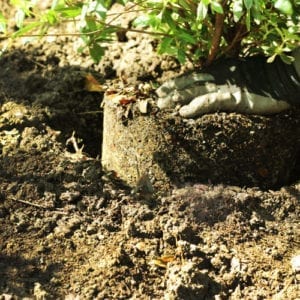
Mix in equal parts of the Calloway’s Tree & Shrub Mix with the native soil. Remove the shrub from its container and gently loosen up the root ball. Place the plant in the planting hole and press the soil around the plant to secure your plant.
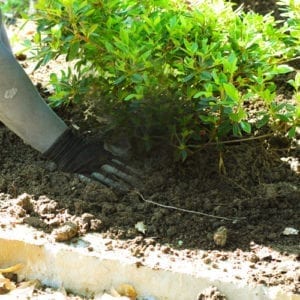
Cover everything to the top of the root with a layer of mulch and water in thoroughly, saturating the root ball and surrounding soil. Keep your newly planted shrubs well-watered.

Spacing Your Shrubs When Planting
When you are planting shrubs, whether new or established, proper spacing is vital. The shrubs need room to grow and if placed too close together, your landscape could look wildly overgrown.
Shrubs grow well when spaced about one half the spread of the mature size of the neighboring shrub. Shrubs that have a wide growth habit naturally need more space around them. For example, if your mature shrub is 4 feet wide, then it is safe to plant it 2 feet from the widest part of another shrub. Take care when planting not to eliminate air pockets in the soil that you formed in your soil preparation.
When Should You Plant Shrubs?
You can start planting from early spring and on; it all depends on your plant selections. A shrub can bloom at many different times of the year, depending on its bloom time. Plant shrubs in your landscape with different bloom times for continual color all year long! This time of year is the best time to plant shrubs, especially summer-blooming shrubs. Planting shrubs that love the heat is ideal for your Texas garden and for the season.
5 Examples of Shrubs to Plant Now
1. Abelia
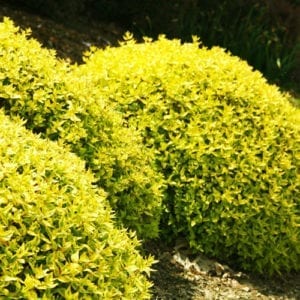
Abelia is a sun-loving, evergreen shrub that sparkles with small, white flowers. This impressive compact shrub has brilliant yellow gold and deep green variegated foliage and lovely white flowers in summer and fall; it is resistant to leaf fade and scorch. Abelia is a good choice for attracting birds, bees, and butterflies to your yard.
2. Althea
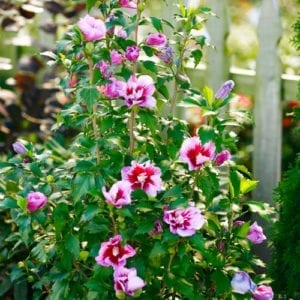
Althea, also known as Rose of Sharon, is a tall, stiffly upright shrub with extremely showy bluish-purple double flowers which appear throughout summer, the flowers are individually beautiful; a very adaptable garden shrub, but does best in full sun. Butterflies and hummingbirds love Althea plants.
3. Buddleia
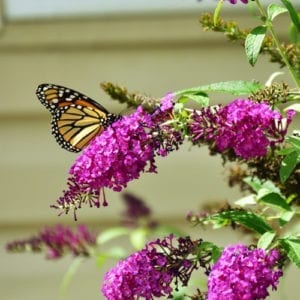
Buddleia, or Butterfly Bush, a compact garden plant with large, soft flowers with orange eyes on sturdy stems; attracts butterflies; may treat as a perennial and cut it back to the ground each spring as it regrows vigorously and blooms on new wood. Under ideal conditions, this shrub can be expected to live for approximately 20 years.
4. Texas Sage
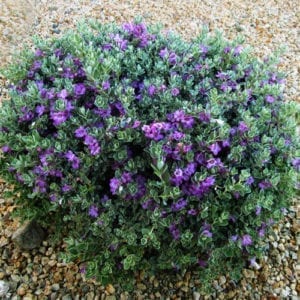
Texas Sage is a compact, mounded shrub with bright silvery foliage; showy hot pink flowers in summer; a great water conservation plant, good for dry, hot, rocky sites; must have well drained, alkaline soil; prune lightly to maintain fullness; must have full sun. Texas Sage is best pruned in late winter once the threat of extreme cold has passed and it is highly tolerant of urban pollution and will even thrive in inner city environments.
5. Yucca
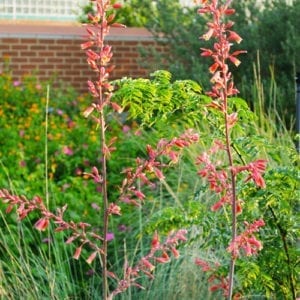
Yucca is a stately succulent plant has arching grassy looking foliage that is leathery to the touch; the linear olive foliage has fibrous strands along the edge; tall spikes covered with showy rose to pink flowers are long blooming; perfect as a garden accent. This is a great plant for attracting hummingbirds. Plant this shrub in an area of your landscape that receives full sunlight throughout the day.
How Deep Do Shrub Roots Grow?
Root growth in a shrub develops in a more lateral sense. Think of the leafy canopy of a shrub, for example, the ground level area underneath is called the drip line. The roots generally grow parallel to the drip line because it helps the top of the root to properly absorb water and nutrients.
Can Shrubs Damage Your Foundation?
When gardening, it is a good rule of thumb to avoid planting vegetation that will vine or grow on the exterior walls of your house. Always ensure the planting hole is placed appropriately based on its mature size. That will help you determine how much space to account for your planting hole and planting shrubs. Leave a pathway between the plant and your home.
When watering trees and shrubs near your home, keep a fairly uniform moisture level in the surrounding soil. Using a soaker hose and applying a layer of mulch can help.
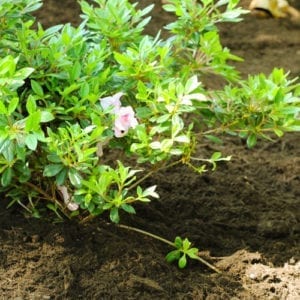
Tips For Planting Potted Shrubs
Planting shrubs in a container is really no different than any other container creation. The key factor to consider is dry out. Generally, plants in pots or containers require more frequent watering. Calloway’s Premium Potting Soil is ideal due to its water-retaining capabilities. It is important to choose a potting soil that can maintain the moisture levels in the soil for healthy root growth. Select pottery that is large enough for the shrub with room to grow. Think about your pottery selection and placement in your yard.
Check out our blog here for tips and inspiration on your next container garden and creation.
Feed Your Plants
In order for your shrubs to stay vibrant and beautiful, they need proper nourishment. Feed your plants with quality ingredients and do it naturally. Try Calloway’s Natural Garden Food. Our new and improved formula is perfect for lawns, flowerbeds, vegetables, fruits, trees, and shrubs. It is enhanced with Jobe’s Biozome® and Archaea, which is a unique blend of beneficial microorganisms, which breaks down complex minerals to improve long-term soil quality. This highly enriched fertilizer also contains helpful mycorrhiza, a healthy bacteria that stimulates growth above and below the soil. This 10-0-2 formula contains the most nitrogen you will get from a natural fertilizer.
For new plants, mix the food into the soil at the planting location. For established shrubs, mix food into the soil underneath plant, along the drip line. Follow the instructions on the packaging, based on the selection of plants you are feeding and whether or not the plants are new or established and mature, or in a container or raised bed.
Get the spreading instructions here and borrow a spreader for free at our store nearest you!

Planting a shrub, or many shrubs, will add beauty, texture, color, and character to any landscape. Shrubs help make a home, look like a home that is welcoming and personable. Shrubs provide color all year long, whether the rich green in the leaves or dazzling with blooms. Spend some time outdoors with your family and revel in the warm seasonal breeze. Stop by our store today to pick up quality shrubs and supplies.
Questions? Ask our Texas Certified Nursery Professionals, available at every store location. Don’t feel like planting? Try our Pick & Plant Garden Services, available at every store location. You pick your plants, and we plant them for you!
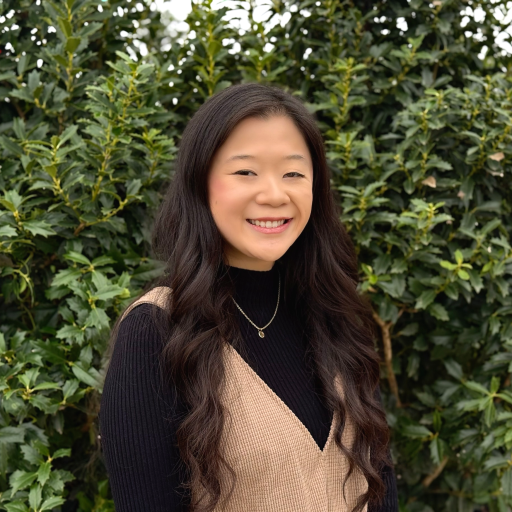
Graphic Designer and Social Media Manager with 7+ years of experience creating impactful visuals and strategic digital content. Skilled in branding, content creation, and growing online engagement.